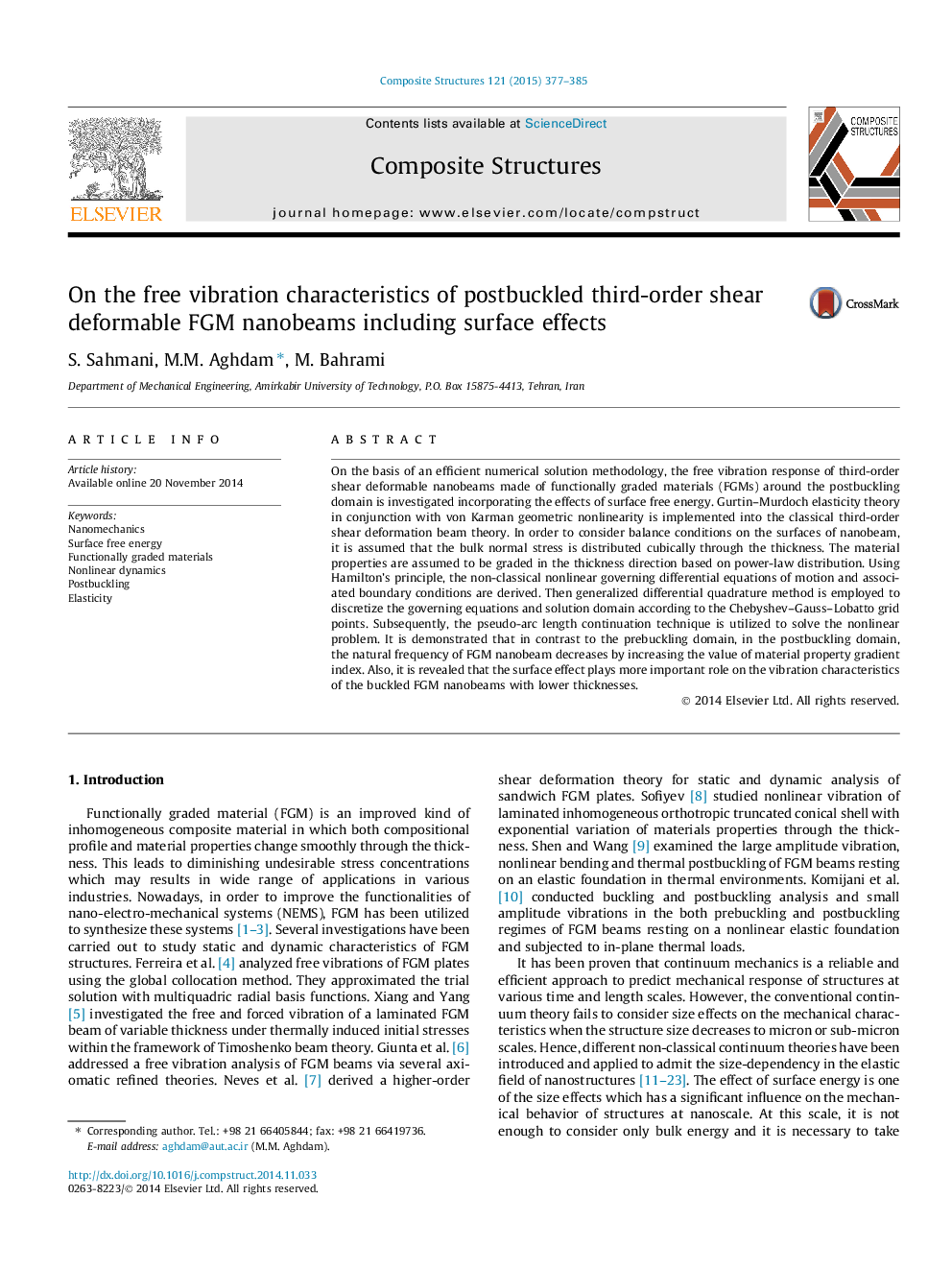| Article ID | Journal | Published Year | Pages | File Type |
|---|---|---|---|---|
| 251339 | Composite Structures | 2015 | 9 Pages |
On the basis of an efficient numerical solution methodology, the free vibration response of third-order shear deformable nanobeams made of functionally graded materials (FGMs) around the postbuckling domain is investigated incorporating the effects of surface free energy. Gurtin–Murdoch elasticity theory in conjunction with von Karman geometric nonlinearity is implemented into the classical third-order shear deformation beam theory. In order to consider balance conditions on the surfaces of nanobeam, it is assumed that the bulk normal stress is distributed cubically through the thickness. The material properties are assumed to be graded in the thickness direction based on power-law distribution. Using Hamilton’s principle, the non-classical nonlinear governing differential equations of motion and associated boundary conditions are derived. Then generalized differential quadrature method is employed to discretize the governing equations and solution domain according to the Chebyshev–Gauss–Lobatto grid points. Subsequently, the pseudo-arc length continuation technique is utilized to solve the nonlinear problem. It is demonstrated that in contrast to the prebuckling domain, in the postbuckling domain, the natural frequency of FGM nanobeam decreases by increasing the value of material property gradient index. Also, it is revealed that the surface effect plays more important role on the vibration characteristics of the buckled FGM nanobeams with lower thicknesses.
